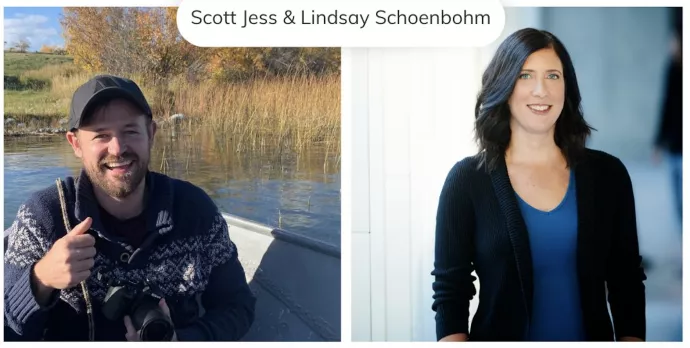
Groundbreaking research in EDI
A collaborative survey of equity, diversity, and inclusion hopes to ultimately create some seismic shifts in the academic environment
When Scott Jess was attempting to locate Canadian stats about the state of representation in his field of geoscience, he realized that these metrics didn’t actually exist. So, he set out to change that.

“I was trying to write something about the postdoctoral experience in Canada and wanted to back it up with some data,” says Jess in a joint interview with UTM Professor Lindsay Schoenbohm from UTM’s Department of Chemical & Physical Sciences (CPS) on the latest episode of VIEW to the U podcast.
“However, as I started looking for information about the gender balance, or the racialized or Indigenous populations for postdocs in Canada, I did not find a lot, particularly for field-specific data. After receiving a particularly frustrating email from Statistics Canada, who were not forthcoming at all with the data, and, feeling really angry because I need data to try and understand some of the demographic issues in our field, at that point, I just thought ‘Okay, let’s do this then – let's collect that data.’
Jess, who is currently an Assistant Professor of Earth Surface Processes at Washington State University in the School of the Environment, was working at the time as a postdoc in Schoenbohm’s lab in CPS.
He turned to his friend Emily Heer, a project coordinator at the University of Calgary, who regularly works with demographic data and surveys, as well as his supervisor Schoenbohm, who was fully supportive of this endeavour: she has been a steadfast advocate for equity, diversity, and inclusion (EDI) initiatives over the years, based on her own personal experiences and those of her female colleagues in the sciences, but particularly as the current Chair of CPS, where she says that they have made some progress, but could still be doing more to change some of the race and gender disparities that have existed for so long.
The trio surveyed graduate students, postdocs, and faculty members at 35 different geoscience departments across Canada, and their report “Demographic Trends in Canadian Academic Geoscience” was published in late 2023.
Jess says their findings indicate that there is a big drop off, in terms of representation, at the salaried-researcher level, in postdoctoral and faculty positions.
While he wants to better understand and examine these disparities further, and they plan to conduct this study every three years to monitor the status of representation in geoscience in Canada, Jess says he is less fixated on closing the gap and more intent on carving out more truly inclusive spaces in academia.
“Our goal, I think, is about ensuring that that door into these academic spaces is as equitable as possible and that everyone has a fair shot, which is clearly not the case at this moment in time,” says Jess.
“There's a desire here, for me especially, to ensure that everyone who wishes to participate can, and we need to make that space as inclusive as possible with a greater sense of belonging. There's a really good [Brené Brown] quote that talks about ‘belonging being the opposite of fitting in,’ because fitting in is fitting a mold, whereas belonging is being yourself in a space. And that's the goal, I think: to ensure that we create academic spaces or a field that ensures everyone gets to be who they are and do the work that they love with their own unique perspectives.”
Resources
- Listen to the VIEW to the U interview with Scott Jess and Lindsay Schoenbohm.
- A full transcript of the VIEW to the U interview is available.
- See a Demographic Survey of Canadian Academic Geoscience
- For more on her tectonic geomorphology research, visit Lindsay Schoenbohm’s website
- For more on his earth surface research, visit Scott Jess’s website
- See the Dancy and Hodari article Lindsay mentions in the interview in International Journal in STEM Education (2023) “How well-intentioned white male physicists maintain ignorance of inequity and justify inaction”
- See some of the U.S. National Science Foundation report that Scott references in the VIEW to the U interview.
- Lindsay was also on a previous episode of VIEW to the U in 2018.
